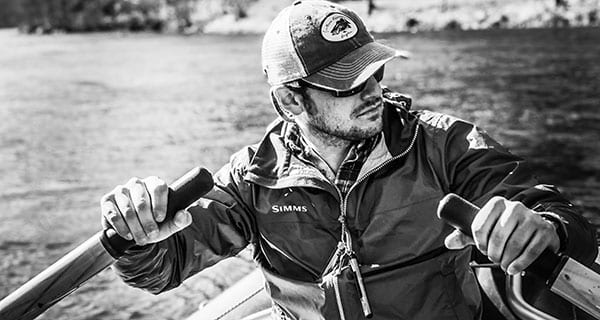One of the ways that we, as anglers, can ensure the survival of our fisheries is to instill proper fish handling and catch and release measures, especially moving forward into the summer months where water temperatures can start increasing to levels that can make fish survival questionable once they’re caught. Here’s some very basic steps that every angler can follow for better fish handling, which cover a myriad of different fish species found here in the mountains.
- Carry a net appropriate for the fish species you’re targeting, and use it. It’s amazing to me how many anglers forgo using a net while out on the water. I’ve written a previous article on the subject already but a net, in most cases, can greatly reduce the time the fish is spent out of the water and/ or handled by an angler.
- Carry a thermometer, and use it. As stated, we’re about to enter the hottest months out of the year. Increased water temperatures will lead to decreased dissolved oxygen levels, which can result in fish not surviving once brought to hand. Every species of fish has its own cutoff for when the water is simply too hot to fish. For trout, that water temperature is usually anywhere between 62 and 65 degrees. At that point, simply catching a trout could lead to its death even if it has been released.
- Keep fish in the water as much as possible. Unhooking and taking pictures of fish while the fish is completely submerged keeps the fish from becoming further stressed as a result of being out of the water for long periods of time.
- Keep your hands away from the fish’s gills/ don’t squeeze fish when trying to hold them. One of the best pieces of advice I got as a kid learning how to fish was “don’t do to a fish what you wouldn’t want done to you.” While cheesy, that advice holds true. The gills of fish are incredibly delicate and shouldn’t be handled under any circumstances. Fish should never be squeezed either, as this can result in internal bleeding that will cause a fish to die hours after it’s been released.
- Keep fish pictures to a bare minimum, especially if it’s hot. The number one killer of large fish in Western North Carolina is when someone holds a large fish out of the water for a hero shot for extended periods of time. On the other end of the spectrum; there are those who try to take pictures of every single fish they catch. I promise that once you’ve seen one 7-10” long rainbow trout, you’ve seen them all. Releasing a fish as quickly as possible after it’s been caught can greatly increase its chances of survival.
While I know these tips may seem basic to some, I think it’s important to pass this knowledge along to the new members of the angling community. The only way that our fisheries can survive is through practicing good conservation ethics, and by doing so we can ensure the fisheries in our state for generations to come.
Ethan Hollifield is a member of a conservation organization called 2% For Conservation and a guide for Southern Appalachian Anglers
